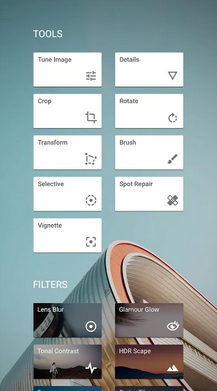
A digital camera is a camera that captures photographs in digital memory. Most cameras produced today are digital, largely replacing those that capture images on photographic film. Digital cameras are now widely incorporated into mobile devices like smartphones with the same or more capabilities and features of dedicated cameras. High-end, high-definition dedicated cameras are still commonly used by professionals and those who desire to take higher-quality photographs.

A smartphone is a portable computer device that combines mobile telephone functions and computing functions into one unit. They are distinguished from older-design feature phones by their more advanced hardware capabilities and extensive mobile operating systems, which facilitate wider software, access to the internet, and multimedia functionality, alongside core phone functions such as voice calls and text messaging. Smartphones typically contain a number of metal–oxide–semiconductor (MOS) integrated circuit (IC) chips, include various sensors that can be leveraged by pre-installed and third-party software, and support wireless communication protocols. More recently, smartphone manufacturers have begun to integrate satellite messaging connectivity and satellite emergency services into devices for use in remote regions where there is no reliable cellular network.
The Instamatic is a series of inexpensive, easy-to-load 126 and 110 cameras made by Kodak beginning in 1963. The Instamatic was immensely successful, introducing a generation to low-cost photography and spawning numerous imitators.

The Game Boy Camera, released as Pocket Camera in Japan, is a Nintendo accessory for the handheld Game Boy game console. It was released on February 21, 1998, in Japan, and manufacturing was ceased in late 2002. As a toy for user-generated content, it can be used to shoot grayscale photographs, edit them or create original drawings, and transfer images between GBC units or to the 64DD art game suite Mario Artist. The accessory featured a 180°-swivel front-facing camera that allowed users to capture selfies. Its images can be printed to thermal paper with the Game Boy Printer. The GBC's cartridge contains minigames based on Nintendo's early games such as the arcade video game Space Fever and the Game & Watch handheld game Ball, and a chiptune music sequencer; photographers have embraced its technological limitations as artistic challenges.

A camera phone is a mobile phone which is able to capture photographs and often record video using one or more built-in digital cameras. It can also send the resulting image wirelessly and conveniently. The first commercial phone with color camera was the Kyocera Visual Phone VP-210, released in Japan in May 1999.

A toy camera is a simple, inexpensive film camera.

Digital photography uses cameras containing arrays of electronic photodetectors interfaced to an analog-to-digital converter (ADC) to produce images focused by a lens, as opposed to an exposure on photographic film. The digitized image is stored as a computer file ready for further digital processing, viewing, electronic publishing, or digital printing. It is a form of digital imaging based on gathering visible light.
The merits of digital versus film photography were considered by photographers and filmmakers in the early 21st century after consumer digital cameras became widely available. Digital photography and digital cinematography have both advantages and disadvantages relative to still film and motion picture film photography. In the 21st century, photography came to be predominantly digital, but traditional photochemical methods continue to serve many users and applications.

The iPod Touch is a discontinued line of iOS-based mobile devices designed and marketed by Apple Inc. with a touchscreen-controlled user interface. As with other iPod models, the iPod Touch can be used as a portable media player and a handheld gaming device, but can also be used as a digital camera, a web browser, for email and messaging. It is similar in design to the iPhone, and can run most iPhone third-party apps from the App Store, but it connects to the internet only through Wi-Fi and does not use cellular network data.

DxO Labs is a privately owned photography software company. It was founded in 2003 by Jérôme Ménière, former CEO of Vision-IQ. The company's headquarters are in Paris, France.

Word Lens was an augmented reality translation application from Quest Visual. Word Lens used the built-in cameras on smartphones and similar devices to quickly scan and identify foreign text, and then translated and displayed the words in another language on the device's display. The words were displayed in the original context on the original background, and the translation was performed in real-time without a connection to the internet. For example, using the viewfinder of a camera to show a shop sign on a smartphone's display would result in a real-time image of the shop sign being displayed, but the words shown on the sign would be the translated words instead of the original foreign words.
FX Photo Studio is a digital photography application for the Apple iPhone. It is compatible with iPhone, iPod Touch, and iPad, requires iOS 4.3 or later.
Microsoft mobile services are a set of proprietary mobile services created specifically for mobile devices, they are typically offered through mobile applications and mobile browser for Windows Phone, | platforms, BREW, and Java. Microsoft's mobile services are typically connected with a Microsoft account and often come preinstalled on Microsoft's own mobile operating systems while they are offered via various means for other platforms. Microsoft started to develop for mobile computing platforms with the launch of Windows CE in 1996 and later added Microsoft's Pocket Office suite to their Handheld PC line of PDAs in April 2000. From December 2014 to June 2015, Microsoft made a number of corporate acquisitions, buying several of the top applications listed in Google Play and the App Store including Acompli, Sunrise Calendar, Datazen, Wunderlist, Echo Notification Lockscreen, and MileIQ.

Starmatic was a social networking-enabled photo sharing and filtering application for the Apple iPhone, launched in September 2012.
Zitrr Camera is an iPhone camera app developed by Zitrr – a division of Rootwork Systems. The app can be used to apply real-time filters, effects and lenses to both photos and videos. Zitrr Camera provides 8 different shooting modes and 6 grid modes, has a gallery that allows the user to add tags, search for photos by location, tags and date, and view the captured photos as a slideshow. Zitrr Camera also provides integrated sharing options via Facebook, Twitter, YouTube, Flickr, Instagram, Tumblr, Google+ and direct emailing.

Lumia imaging apps are imaging applications by Microsoft Mobile and formerly by Nokia for Lumia devices built on the technology of Scalado. The Lumia imaging applications were notably all branded with "Nokia" in front of their names, but after Microsoft acquired Nokia's devices and services business the Nokia branding was superseded with "Lumia", and often updates included nothing but name changes, but for the Lumia Camera this included a new wide range of feature additions. Most of the imaging applications are developed by the Microsoft Lund division. As part of the release of Windows 10 Mobile and the integration of Lumia imaging features into the Windows Camera and Microsoft Photos applications some of these applications stopped working in October 2015.

A selfie is a self-portrait photograph, typically taken with a digital camera or smartphone, which may be held in the hand or supported by a selfie stick. Selfies are often shared on social media, via social networking services such as Facebook, Twitter, Snapchat, and Instagram.

Benjamin Lowy is an American photojournalist. He is best known for his work as a conflict photographer in war zones, and is one of the early adopters of and a vocal proponent for mobile photography.

Snapseed is a photo-editing application for iOS and Android that enables users to enhance photos and apply digital filters. It was created by Nik Software, and is now owned by Google.

Filters are appearance-altering digital image effects often used on social media. They initially simulated the effects of camera filters, and they have since developed with facial recognition technology and computer-generated augmented reality. Social media filters—especially beauty filters—are often used to alter the appearance of selfies taken on smartphones or other similar devices.















